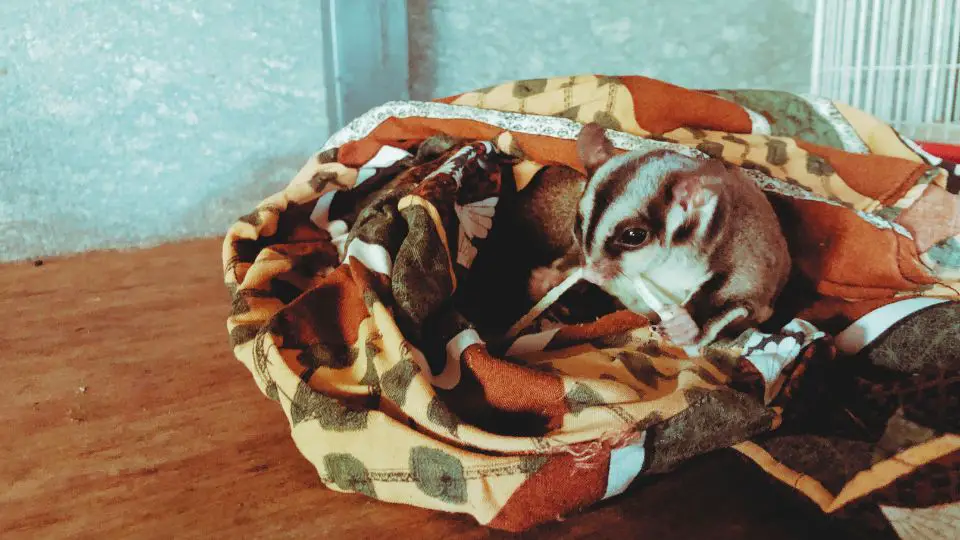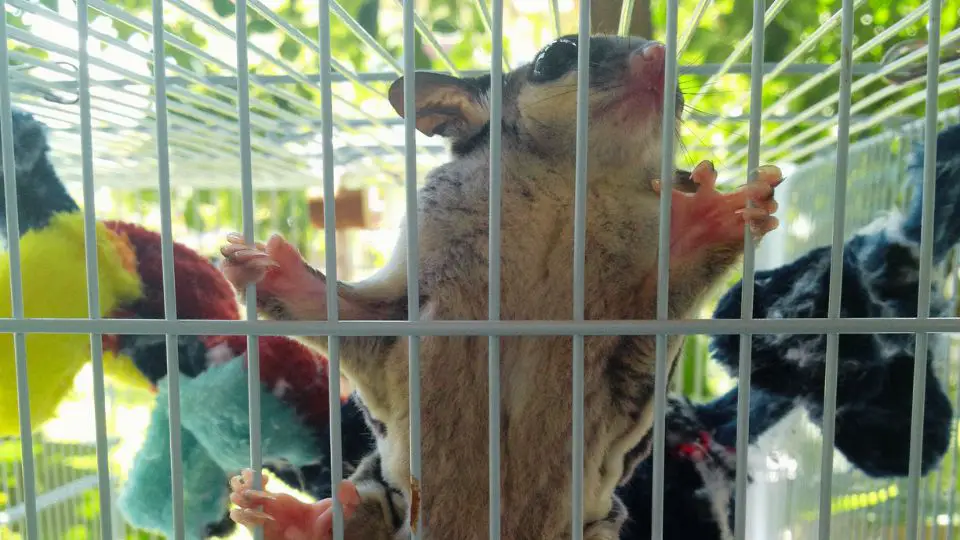Sugar gliders are nocturnal animals that are native to Australia, Indonesia, and Papua New Guinea. In the wild, they typically sleep during the day in tree hollows or nests.
Sugar gliders do not need a heat lamp because they are already adapted to living in warm climates. However, if you are keeping sugar gliders as pets, you may want to provide a heat source for them to help them feel comfortable and avoid stress.
In this article, we will talk about the pros and cons of using a heat lamp for sugar gliders, and what alternatives for such a device are.
Does your sugar glider need a heat lamp?
In the wild, sugar gliders typically sleep during the day in tree hollows or nests and rely on the warmth of the sun to stay comfortable. So they don’t need a heat lamp when they are kept as pets.
You can help your pet glider by placing the cage in an area of your home that has a stable temperature, and it’s not in direct sunlight. This will help to keep your sugar glider healthy and happy.
Although they usually don’t need a heat lamp, sugar gliders are very sensitive to temperature changes and can become stressed if the environment is too cold. A heat lamp can help to create a warm, stable environment for your pet glider.
However, it is important to use the lamp safely, as sugar gliders are also at risk of overheating. If you decide to use a heat lamp, be sure to monitor your sugar glider closely and adjust the temperature as needed to maintain a comfortable environment.
What’s the Best Temperature for Sugar Gliders?
The perfect temperature for sugar gliders is 80 – 88 degrees Fahrenheit (26 – 31 degrees Celsius). That is a bit hard to maintain if you live in a cooler climate. The good news is that sugar gliders can tolerate a wide range of temperatures, and they usually feel their best when the temperature is between 60 and 90 degrees Fahrenheit (15 – 32 degrees Celsius).
How cold is too cold for a sugar glider?
Sugar gliders have different personalities, some may need warmer temperatures than others. But in general, a prolonged exposure to a temperature under 60 degrees Fahrenheit (15 degrees Celsius) is too cold and will create discomfort for your pet sugar glider.
Do sugar gliders need heat rocks?
No, never use heat rocks for sugar gliders or any other pet. Heat rocks can get too hot and cause burns, so it’s best to avoid them altogether.
Disadvantages of using heat lamps for sugar gliders
While heat lamps can help to create a warm, stable environment for your sugar glider, there are also some disadvantages to using them.
First, heat lamps can be a fire hazard if they are not used properly. Second, sugar gliders are at risk of overheating if the temperature is too high. This can cause dehydration and stress, so it’s important to use the heat lamp safely and monitor your pet closely.
Finally, heat lamps can be expensive to keep running, so be sure to factor that into your decision if you are considering using one for your sugar glider.
Benefits of using heat lamps
Used with proper care, a heat lamp can have some benefits for your sugar glider, including:
- Allows your sugar glider to get the necessary heat to stay active at night;
- Provides UVB rays, which are necessary for your sugar glider’s health;
- Gives your sugar glider a sense of security, holding a stable temperature.
When it comes to deciding whether or not to use a heat lamp for your sugar glider, there are pros and cons to consider. Ultimately, the decision is up to you and what you feel is best for your pet.
How do you know if your sugar glider is too cold?
If you’re worried that your sugar glider may be too cold, there are a few things you can look for. First, you can check your sugar glider’s ears. If they are cold to the touch, this is sign that your pet is too cold.
Additionally, check for signs of shivering or lethargy. If your sugar glider is shivering or seems unusually sluggish, it’s a good idea to warm them up gradually. Finally, observe their behavior. If your sugar glider is huddled in a ball or hiding in a nest box, they may be trying to stay warm.
If you suspect your sugar glider is too cold, take action to warm them up slowly and monitor them closely.
How to keep your sugar glider warm
When it comes to alternatives for heat lamps, there are a few things you can do to keep your sugar glider warm.
Use a space heater
A space heater is a good alternative for heat rocks or heat lamps. Place the space heater near the cage and keep it on a low setting. This will help to maintain a comfortable temperature for your sugar glider without the risk of overheating.
Wrap the cage in a blanket
Another way to help your sugar glider stay warm is to wrap the cage in a blanket. This will create a warm, cozy environment for your pet and help to keep the temperature stable.
Get a double-lined sleeping pouch
A double-lined sleeping pouch is a must-have for sugar gliders. This type of pouch has two layers of material, which helps to insulate your pet and keep them warm. Look for a pouch that is made from a breathable material, such as cotton, to prevent your sugar glider from getting too hot.
Place a dehumidifier in the room
If you live in a humid climate, consider placing a dehumidifier in the room with your sugar glider. This will help to keep the air dry and prevent your pet from getting too hot.
Place a fleece blanket or towel in the bottom of the cage
Adding a fleece blanket or towel to the bottom of the cage will help to create a cozy, warm environment for your sugar glider. Be sure to check the blanket often to make sure it is clean and free of debris.
Get your glider a friend
One of the best ways to keep your sugar glider warm is to get them a friend. Sugar gliders are social animals and love to huddle together for warmth. Having a buddy will also help to keep your sugar glider active and happy.
Check on your sugar glider often to make sure it is warm and comfortable
No matter what type of heating you use, it is important to check on your sugar glider often to make sure it is comfortable. If you notice any signs of stress or discomfort, be sure to adjust the temperature accordingly.
As mentioned, it is not that hard to keep your sugar glider warm because they usually feel good at any temperature over 60 F (15 C), so you may not need any device at all and a typical pouch or nest box with some blankets will do just fine.
Conclusion
In conclusion, it is not necessary to use a heat lamp for sugar gliders. However, there are some benefits to using one, such as providing a stable temperature and UVB rays. If you do use a heat lamp, be sure to monitor your pet closely to prevent overheating. There are also some alternatives to heat lamps, such as space heaters and wrapping the cage in a blanket. Ultimately, the decision is up to you and what you feel is best for your pet.







